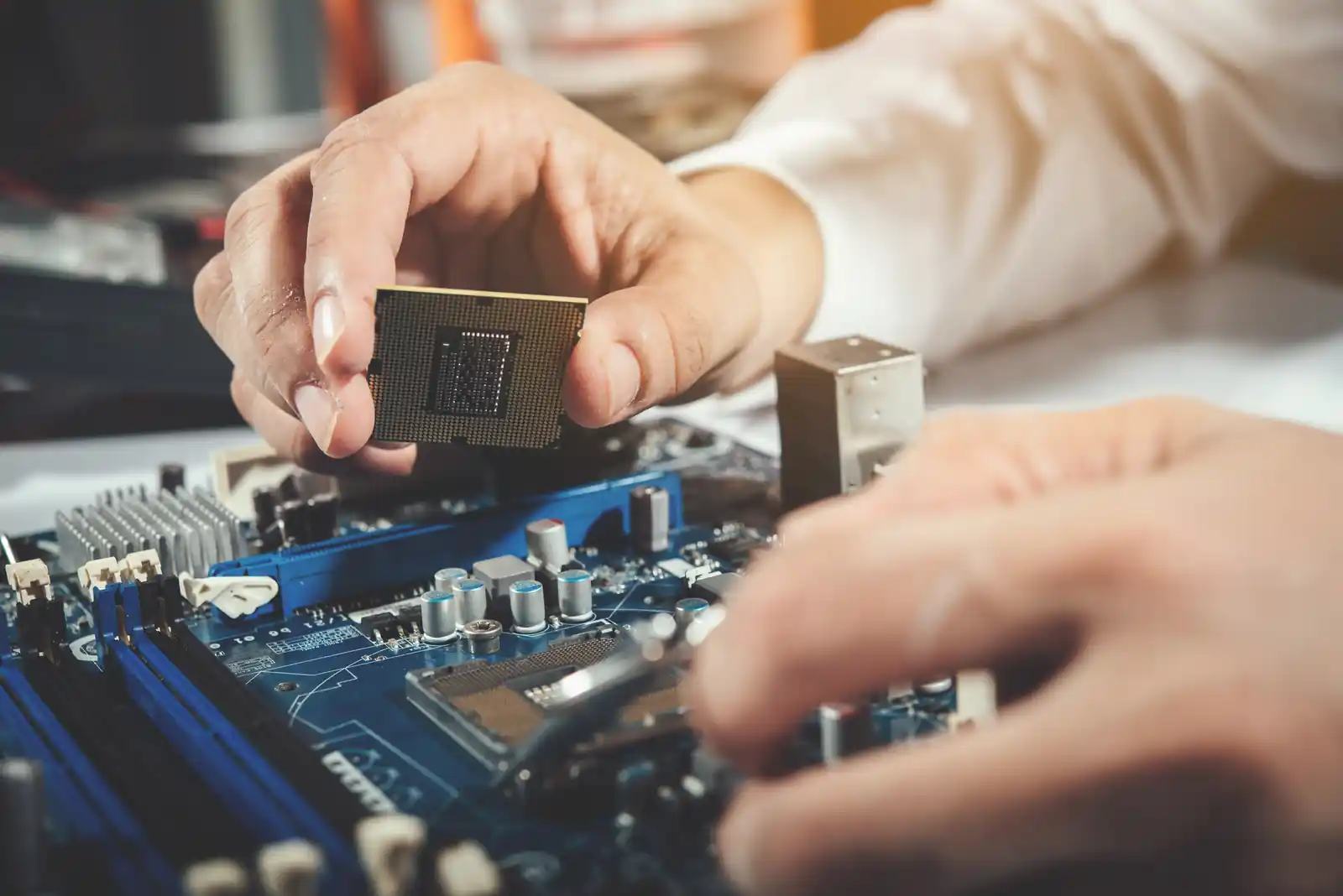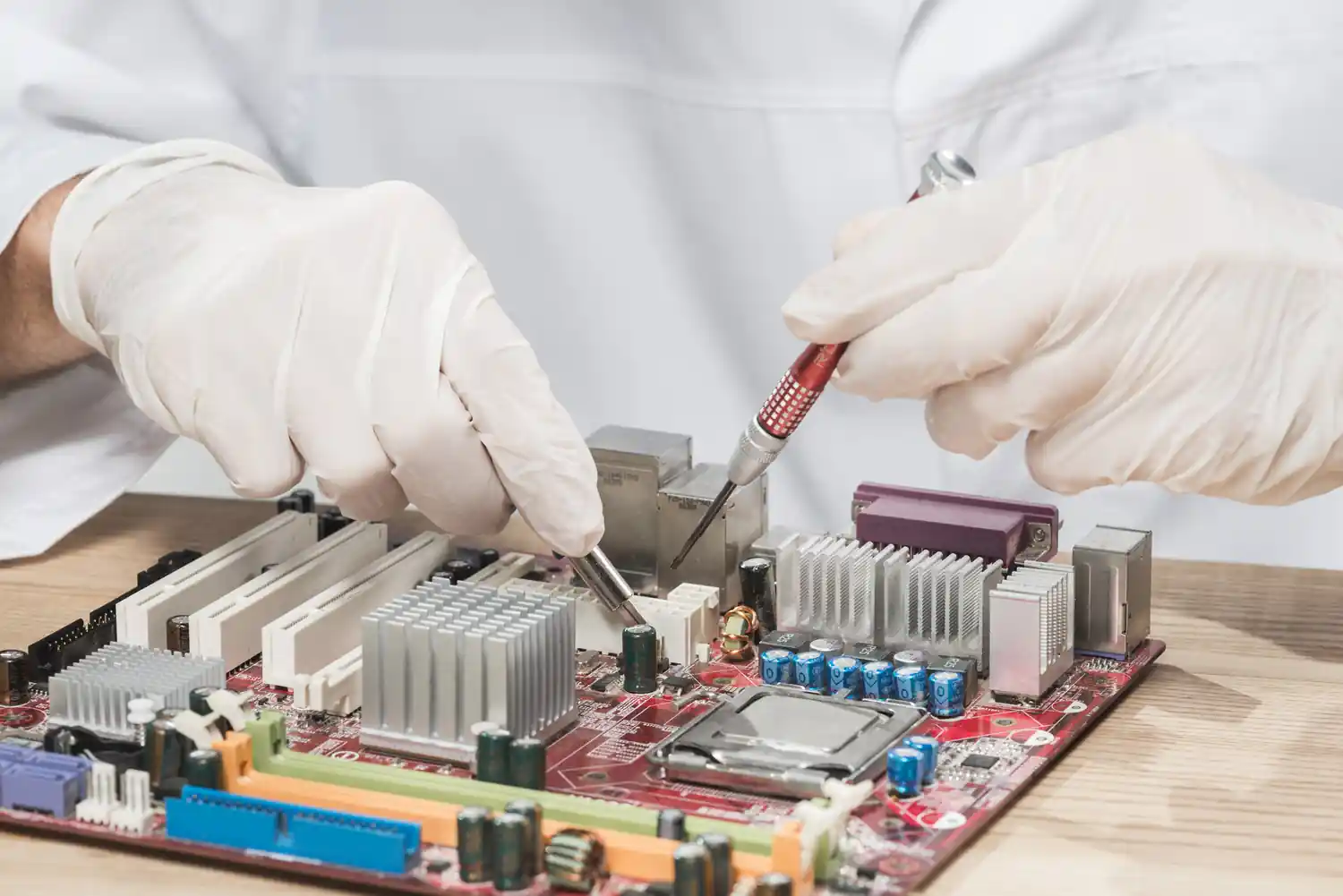Introduction
Persistent computer restarting can be frustrating and perplexing, disrupting productivity and causing inconvenience. If your computer system is in an endless cycle of restarts, fear not! In this comprehensive guide, we delve into the root causes of this problem and provide expert solutions to ensure a guaranteed fix.
Whether you’re experiencing sudden restarts, blue screen errors, or random shutdowns, our team of skilled technicians at PC Repair Guru are here to help you regain control of your device.
Understanding the Causes of Persistent Restarting
Identify and troubleshoot hardware issues that could trigger repeated PC restarts, such as faulty power supplies, malfunctioning Memory RAM, overheating components or even graphic card issues. We’ll guide you through diagnostic tests and hardware monitoring tools to identify potential culprits.
Troubleshooting Repeated Restarts:
In this section, We will help you identify and troubleshoot potential hardware issues that could trigger repeated restarts.
- Identify Faulty Power Supplies: A failing power supply can cause abrupt restarts due to insufficient power delivery to your computer’s components. Check for signs like unusual noises or burning smells emanating from the power supply unit (PSU). We’ll show you how to use a PSU tester or swap with a known working PSU to determine if it’s causing the problem. Here is the youtube link to show how to do PSU testing.
- Troubleshoot Malfunctioning RAM: Faulty RAM modules can lead to system instability and continuous restarts. We’ll guide you through diagnostic tests like the Windows Memory Diagnostic Tool or Memtest86 to see for any memory errors.
This guide covers memory ram issues and Windows memory diagnostic tools.
- Utilize Hardware Monitoring Tools: Monitoring the temperatures and performance of your hardware is crucial for detecting potential issues. We’ll introduce you to reliable hardware monitoring software that allows you to check the temperature levels and identify any issues. This guide will focus on selecting standalone software, and we recommend Speccy due to its user-friendly interface.
- Check for Loose Connections: Loose connections between hardware components can disrupt power delivery and trigger restarts. We’ll show you how to inspect and secure connections. Such as those for power cables, RAM modules, and graphics cards.
In this youtube, How to Check Loose Connection. We have covered power cable, CPU, GPU and RAM common causes that cause computer restart.
By following, our step-by-step guidance and using diagnostic tools, you can pinpoint the hardware culprits behind the repeated restarts. Identifying and resolving hardware malfunctions will bring stability back to your system without worrying about the cycle of computer restarts. You can also check out our article for common computer issues in Birmingham.
Software Glitches:
Uncover common software-related problems, including conflicting drivers, corrupted system files, and problematic updates. Learn how to utilize Windows Event Viewer and other diagnostic tools to pinpoint the issues so you can resolve them effectively.
Software glitches can be frustrating, causing unexpected errors and disruptions. Some common software-related problems include conflicting drivers, corrupted system files, and issues caused by problematic updates.
One effective way to identify software issues is by using Windows Event Viewer. This tool records system events and error messages, providing valuable insights into potential problems. Analyzing the Event Viewer logs, you can pinpoint the specific errors and take necessary actions.
For instance, if you notice recurring errors related to a specific Windows driver, updating or reinstalling the drivers may resolve the issue caused by conflict. After resolving the issues, there is a possibility that your computer will no longer restart repeatedly. In cases where your Windows system files are damaged, it is possible to use the System File Checker tool (sfc /scannow) to repair them.
In the case of problematic updates, you can uninstall the recent updates that seem to be causing trouble. You can do this by going to the “Windows Update” section in the Control Panel.
Remember, tackling software glitches requires patience and attention to detail. By utilizing diagnostic tools like Windows Event Viewer and following the appropriate troubleshooting steps, you can effectively fix software-related problems and enjoy a smooth computing experience.
If you find the process overwhelming or encounter complex issues, don’t hesitate to contact the expert technicians at PC Repair Guru for reliable solutions whether it’s for laptop repair in Birmingham or pc repair we got you covered.
Virus and Malware Infections:
Malware and viruses can wreak havoc on your system, leading to continuous restarting. We’ll show you how to perform thorough malware scans and use reputable antivirus software to safeguard your computer. Check out the image below on how to use Malwarebytes and Eset Smart Security
Resolving Ongoing Restarting Problems
Disabling startup programs:
Step-by-step instructions on performing startup programs disabling and resolving software conflicts that might lead to frequent restarts. This method helps you identify startup programs causing issues, enabling you to disable them for a stable system.
Running System File Checker (SFC):
Discover how to use the SFC tool to repair corrupted system files and restore the stability of your operating system. Learn the command-line options to initiate the scanning and repair process.
Checking for Driver Issues:
Guide to updating and fixing problematic drivers that could be causing your computer to restart unexpectedly. Learn to use Device Manager to identify driver-related problems, also updating them with the latest versions by heading to the manufacturer’s websites.
Overheating Solutions:
Overheating can be a common cause of sudden restarts. We’ll explain the importance of proper cooling and airflow. And how to clean the internal components to prevent automatic restarts due to excessive heat.
Cooling is critical for the optimal functioning of your computer’s components. When the CPU, GPU, or other parts generate heat during operation, they rely on cooling mechanisms to dissipate it. Inadequate cooling can lead to thermal throttling, where components slow down to reduce heat output, impacting performance and causing restarts. If you are having an overheating issue you can always contact us for computer repair in Birmingham, we are open 7 days a week.
Maintaining Airflow:
Proper airflow within your computer case is vital for dissipating heat efficiently. Ensuring a continuous flow of cool air and expelling hot air out is crucial to keep temperatures in check. You can achieve this by:
- Cleaning Dust and Debris: Dust and debris can accumulate over time, obstructing airflow and causing components to overheat. Regularly clean your computer’s internal parts, such as fans, heatsinks, and vents, to promote unrestricted airflow.
- Organizing Cable Management: Tangled and cluttered cables can impede airflow inside the case. Organize and route cables neatly to create unobstructed paths for air circulation.
- Positioning your Computer: Place your PC in a well-ventilated area, ensuring sufficient space around it for air to cool your system freely. Avoid placing it against walls or in closed spaces that could trap heat.
Enhancing Cooling Performance: To bolster cooling capabilities and minimize the risk of sudden restarts due to overheating, consider the following options:
- Upgrading Cooling Components: Invest in high-quality aftermarket CPU coolers or case fans to improve heat dissipation. These can significantly lower temperatures and enhance overall system performance.
- Applying Thermal Paste: Properly applying fresh thermal paste between the CPU and its heatsink ensures efficient heat transfer, reducing the risk of overheating.
- Monitoring Temperatures: Use temperature monitoring software to keep track of your system’s heat levels. Allowing you to identify potential issues before they escalate into abrupt restarts.
Diagnosing Blue Screen Errors:
Understand the Blue Screen of Death (BSOD) and methods to troubleshoot specific error codes leading to continuous restarting. We’ll provide a breakdown of common BSOD errors and steps to address them.
- Common BSOD Errors and Their Meanings:
- KERNEL_SECURITY_CHECK_FAILURE: This error typically indicates a security-related issue, such as corrupted system files or incompatible drivers. Troubleshooting involves running System File Checker (sfc /scannow) and updating drivers.
- IRQL_NOT_LESS_OR_EQUAL: This error is often caused by faulty hardware or incompatible drivers. To resolve it, perform hardware tests and update or roll back drivers as needed.
- PAGE_FAULT_IN_NONPAGED_AREA: This error points to memory issues. Running Windows Memory Diagnostic Tool and checking RAM modules can help identify and resolve the problem.
- SYSTEM_SERVICE_EXCEPTION: This error signifies issues with specific system services. Updating Windows and drivers can often resolve this problem.
- Troubleshooting Specific BSOD Errors:
- Identify the Error Code: When the BSOD occurs, note down the error code displayed on the screen. This code contains valuable information that helps identify the underlying issue.
- Search for the Error Code: Use the error code to search for specific solutions online. Many websites and forums offer detailed guides for troubleshooting various BSOD errors.
- Check Hardware and Drivers: Faulty hardware components or outdated drivers are common culprits behind BSOD errors. Conduct hardware tests and ensure all drivers are up-to-date.
- Safe Mode and System Restore:
- Safe Mode: Booting your computer into Safe Mode allows you to start Windows with minimal drivers and services, helping you determine if the issue is caused by third-party software or drivers.
- System Restore: If you recently installed new software or drivers before encountering the BSOD, performing a System Restore to a point before the changes were made can often resolve the issue.
- Seek Professional Help:
- If you are unsure about the cause of the BSOD or unable to resolve the problem on your own, seeking assistance from professional computer repair services like PC Repair Guru is recommended. Expert technicians can diagnose and fix complex BSOD errors, ensuring a stable and reliable system.
Advanced Solutions and System Repair
System Restore:
Utilize the System Restore feature to revert your computer to a previous stable state and resolve persistent restarting problems. Learn how to create restore points and restore your system to a specific point in time. See the image below for detail.

Learn how to create restore points and restore your system to a specific point in time – PC Repair Guru
Hardware Component Testing:
How to conduct comprehensive hardware testing to identify and replace faulty components. We’ll cover memory tests, hard-drive diagnostics, and GPU stress tests to ensure your hardware is working.
Memory Testing:
- Utilize Windows Memory Diagnostic Tool: Windows comes with a built-in Memory Diagnostic Tool that can help you check the integrity of your computer’s RAM. To run the tool, press the Windows key, type “Windows Memory Diagnostic,” and follow the on-screen instructions. The tool will perform memory tests and notify you of any issues detected.
Hard Drive Diagnostics:
- Use CHKDSK (Check Disk): CHKDSK is a built-in Windows utility that scans and repairs file system errors on your hard drive. To run CHKDSK, open Command Prompt as an administrator, type “chkdsk C: /f” (replace “C” with the appropriate drive letter), and press Enter. The tool will check for and fix errors on the hard drive.
GPU Stress Tests:
- Download GPU Stress Testing Software: You can pick various third-party software tools for stress testing your graphics processing unit (GPU). Some popular options include FurMark and MSI Kombustor. These tools push your GPU to its limits, helping to identify any stability issues.
Monitoring Temperature and Performance:
- Use Monitoring Software: Install monitoring software like HWMonitor or Core Temp to keep track of your computer’s temperature and performance. Elevated temperatures may indicate potential hardware problems that need attention.
Seek Professional Assistance:
- If you feel unsure about performing hardware tests, it’s advisable to seek help from a professional. Expert technicians at PC Repair Guru can perform in-depth hardware diagnostics and recommend suitable solutions.
Clean install/upgrade Windows:
A detailed guide to performing a clean reset Windows to resolve persistent restarting issues. Learn the steps for backing up your data, creating bootable media, and performing a clean installation of Windows. See Youtube below:
Preventive Measures and Maintenance
Regular System Maintenance:
Tips for ongoing system maintenance to keep your computer running smoothly and prevent future restart problems. We’ll cover disk cleanup, disk defragmentation, and routine system scans.
Disk Cleanup:
- Use Built-in Disk Cleanup Tool: Windows offers a built-in Disk Cleanup tool that helps remove unnecessary files and free up disk space. To access it, go to “This PC,” right-click on the drive you want to clean (usually “C:”), select “Properties,” then click “Disk Cleanup.” The tool will scan and present a list of files you can safely delete.
Disk Defragmentation:
- Run Disk Defragmenter: Disk defragmentation reorganizes fragmented data on your hard drive, leading to improved performance. To defragment your drive, go to “This PC,” right-click on the drive, select “Properties,” then click “Optimize.” The tool will analyze the drive and perform defragmentation if needed.
Routine System Scans:
- Use Windows Defender or Antivirus Software: Regularly scan your system for malware and viruses using Windows Defender or reliable antivirus software. These scans help detect and eliminate potential threats that could cause restart problems.
Check for System Updates:
- Keep Your System Up to Date: Ensuring that your operating system, drivers, and software are updated regularly. Installing the latest updates and patches enhances system stability and can resolve known issues.
Monitor Startup Programs:
- Manage Startup Applications: Excessive startup programs can slow down your computer and lead to restart problems. Unnecessary startup applications through the Task Manager will help ensure that only the programs you need are running when your computer starts. You can disable some programs from starting.
Keep Your System Cool:
- Maintain Proper Ventilation: Overheating can cause unexpected restarts. Clean dust from vents and ensure proper airflow to keep your system cool and functioning optimally.
Backup and Data Protection:
The significance of regular data backups is to mitigate data loss risks during troubleshooting and repairs. Learn about various backup methods, including external hard drives, cloud storage, and Windows Backup and Restore.
Importance of Data Backups:
- Prepare for Unforeseen Events: Accidents, hardware failures, or malware attacks can result in data loss. Regular backups act as a safety net, enabling you to restore your files.
- Smooth Troubleshooting: During repairs or system updates, data corruption may occur. Backups ensure you can revert to a previous stable state without losing crucial information.
- Protect Irreplaceable Data: Personal documents, photos, and other irreplaceable files are crucial, and regular backups are a key part of achieving this.
Various Backup Methods:
- External Hard Drives: External hard drive allows you to create a copy of your backup file data. Copy your files, and make sure to keep them in a secure location.
- Cloud Storage: Cloud services like Google Drive, Dropbox, or OneDrive offer secure online storage for your data. Automatic syncing ensures your data is backed up and accessible from any device.
- Windows Backup and Restore: Windows provides its built-in backup solution. Set up a backup schedule and choose the files or folders to back up to an external drive or network location.
Creating Backup Schedule:
- Determine Frequency: Decide how often you need to back up your data based on its importance and how frequently it changes.
- Automated Backups: Use software or cloud services that offer automatic backups to ensure consistency and convenience.
Data Encryption and Security:
- Secure Your Backups: If using external drives or cloud storage, consider encrypting your data to protect it from unauthorized access.
- Password Protection: Set strong passwords for your backups to add an extra layer of security.
Conclusion:
In conclusion, persistent computer restarting can be a complex issue with multiple underlying causes. With our comprehensive guide, you now possess expert solutions to tackle this problem effectively. Remember, if troubleshooting on your own becomes overwhelming, the skilled technicians at PC Repair Guru are always ready to assist you in resolving persistent restarting issues. Embrace the power of our guaranteed fix and bid farewell to endless restarts, allowing you to reclaim seamless computing experiences. You can always check us out on our homepage computer repair Birmingham.















